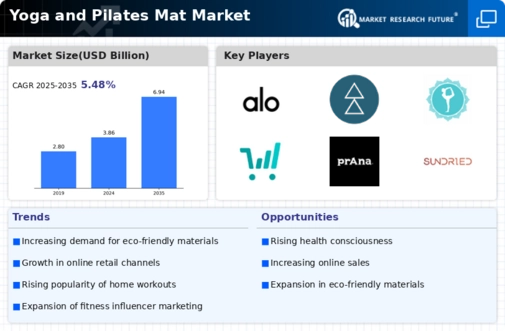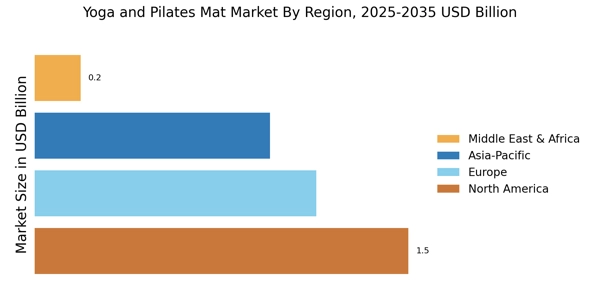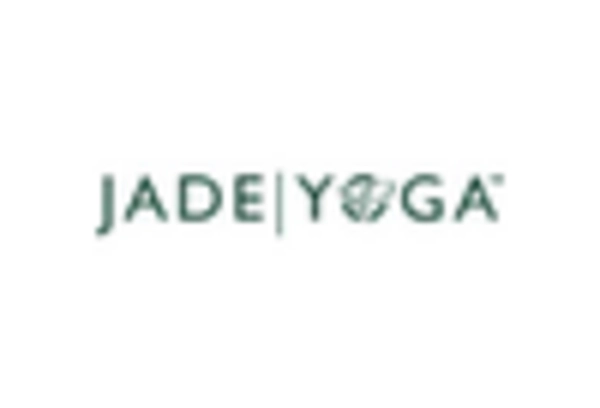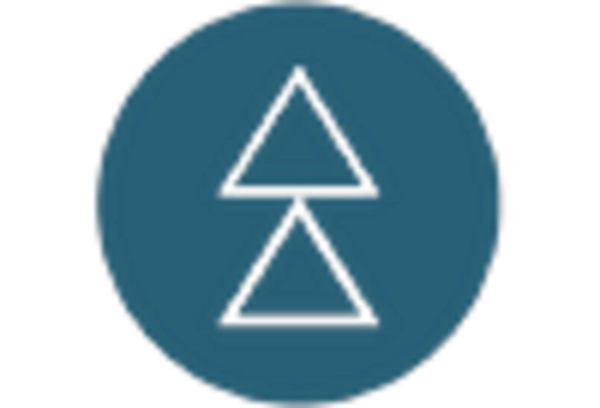Rising Health Consciousness
The increasing awareness of health and wellness among consumers appears to be a primary driver for the Yoga and Pilates Mat Market. As individuals seek to improve their physical fitness and mental well-being, the demand for yoga and Pilates mats has surged. According to recent data, the fitness industry has seen a notable uptick in participation rates, with yoga and Pilates being among the most popular activities. This trend suggests that more people are incorporating these practices into their daily routines, thereby driving the need for high-quality mats. The Yoga and Pilates Mat Market is likely to benefit from this growing health consciousness, as consumers prioritize products that enhance their practice and support their fitness goals.
Innovations in Material and Design
Advancements in material technology and design are transforming the Yoga and Pilates Mat Market. Manufacturers are increasingly focusing on creating mats that are not only durable but also eco-friendly and aesthetically pleasing. Innovations such as non-toxic materials and improved grip surfaces are becoming more prevalent, appealing to environmentally conscious consumers. Market Research Future indicates that mats made from sustainable materials are gaining traction, as consumers seek products that align with their values. This trend towards innovation suggests that the Yoga and Pilates Mat Market will continue to evolve, with new offerings that cater to diverse consumer preferences.
Expansion of Fitness Centers and Studios
The proliferation of fitness centers and studios dedicated to yoga and Pilates is contributing significantly to the Yoga and Pilates Mat Market. As more facilities open, they often require a substantial inventory of mats to accommodate their clientele. This expansion is not limited to urban areas; even suburban regions are witnessing the establishment of specialized studios. Market data indicates that the number of yoga studios has increased by over 20% in recent years, reflecting a robust interest in these practices. Consequently, the demand for mats is expected to rise in tandem with the growth of these establishments, further propelling the Yoga and Pilates Mat Market.
Increased Participation in Wellness Programs
The growing emphasis on wellness programs within corporate and community settings is driving demand for yoga and Pilates mats. Organizations are increasingly recognizing the benefits of incorporating physical activities into their wellness initiatives, leading to a rise in group classes and workshops. This trend is reflected in the Yoga and Pilates Mat Market, where bulk purchases for corporate wellness programs are becoming more common. Data indicates that companies investing in employee wellness see improved productivity and morale, which further incentivizes the adoption of yoga and Pilates practices. As more organizations embrace these programs, the demand for quality mats is expected to rise, positively impacting the Yoga and Pilates Mat Market.
Influence of Social Media and Online Platforms
The role of social media and online platforms in promoting yoga and Pilates practices cannot be understated. Influencers and fitness enthusiasts frequently share their routines and experiences, which often include recommendations for specific mats. This visibility appears to drive consumer interest and purchasing behavior within the Yoga and Pilates Mat Market. Data suggests that online sales of fitness equipment, including mats, have seen a significant increase, as consumers are more inclined to purchase products they see endorsed by trusted figures. The impact of social media marketing is likely to continue shaping consumer preferences and driving sales in the Yoga and Pilates Mat Market.


















Leave a Comment